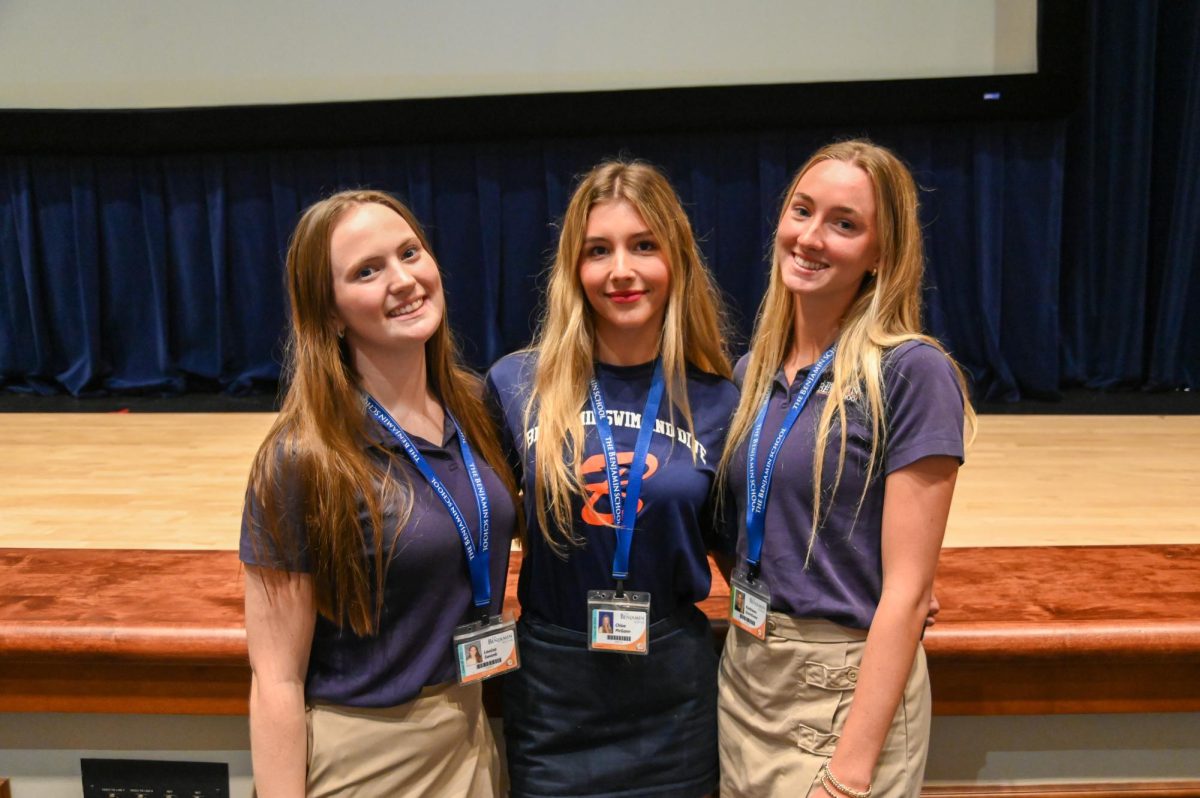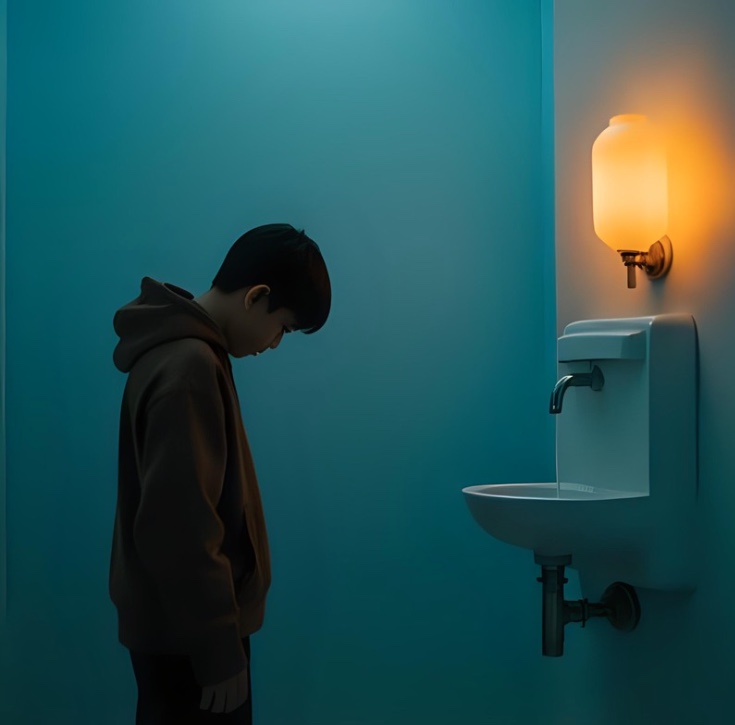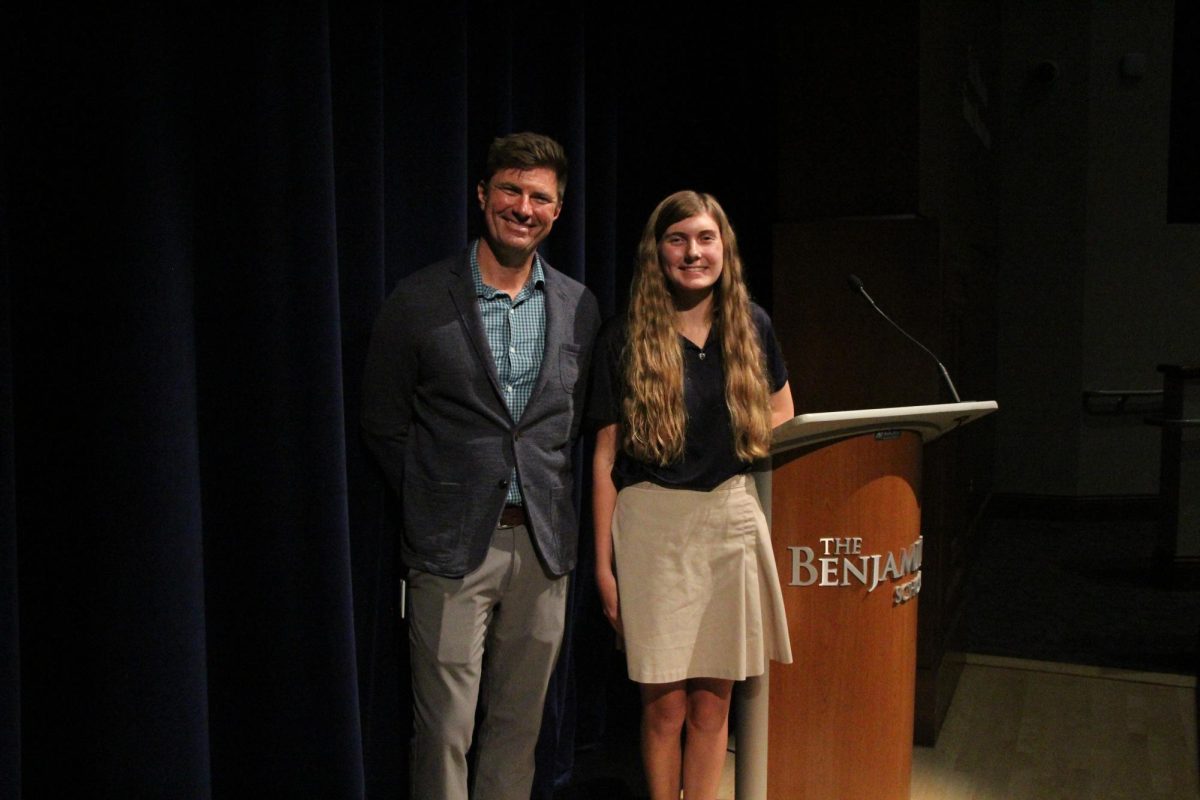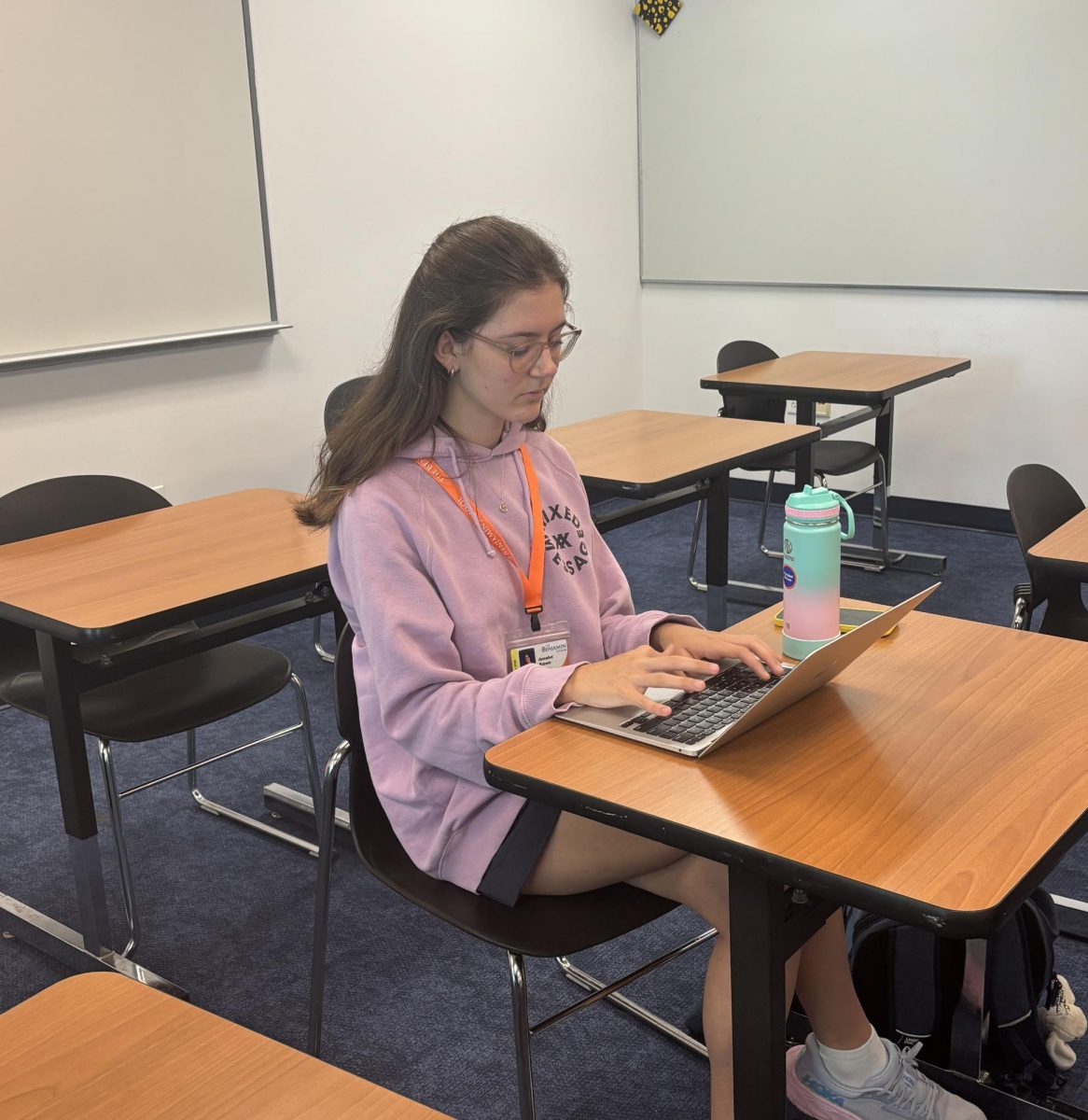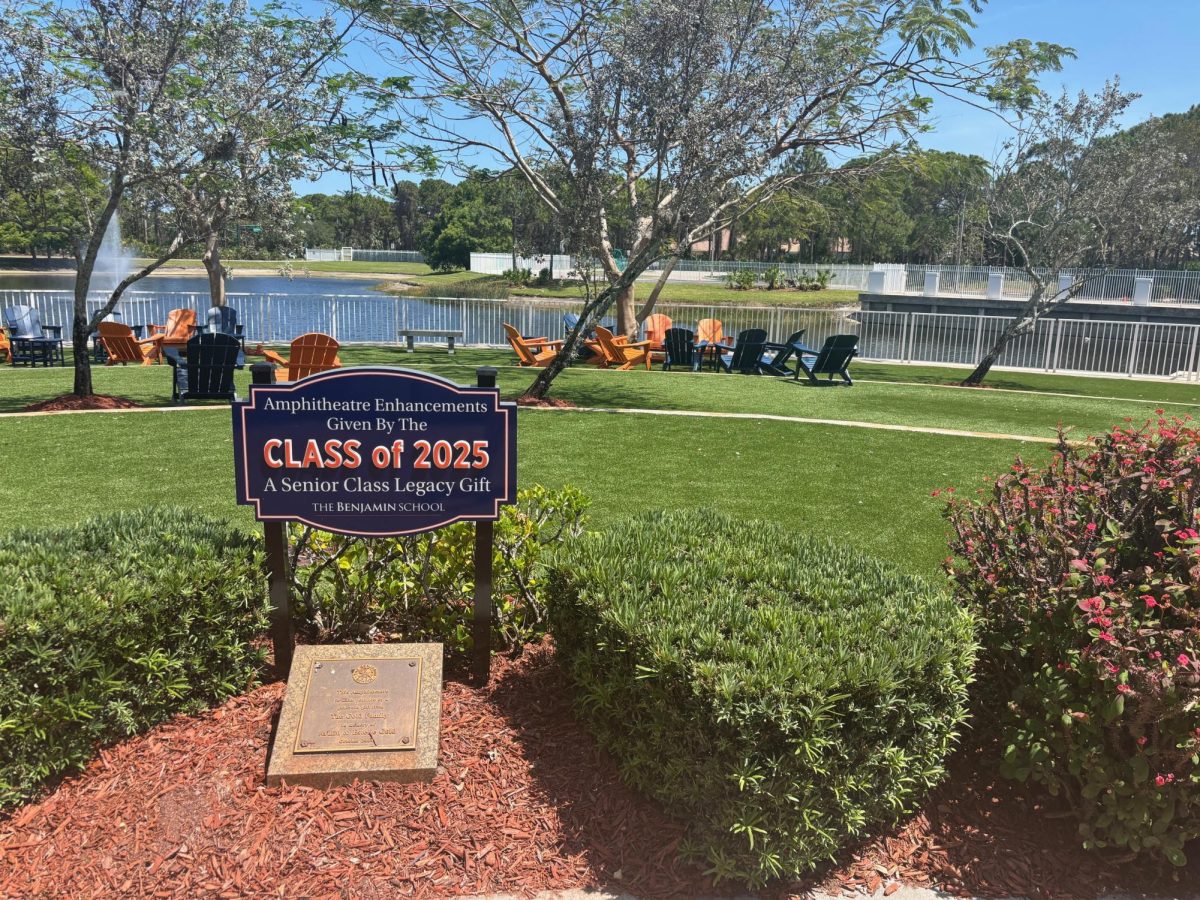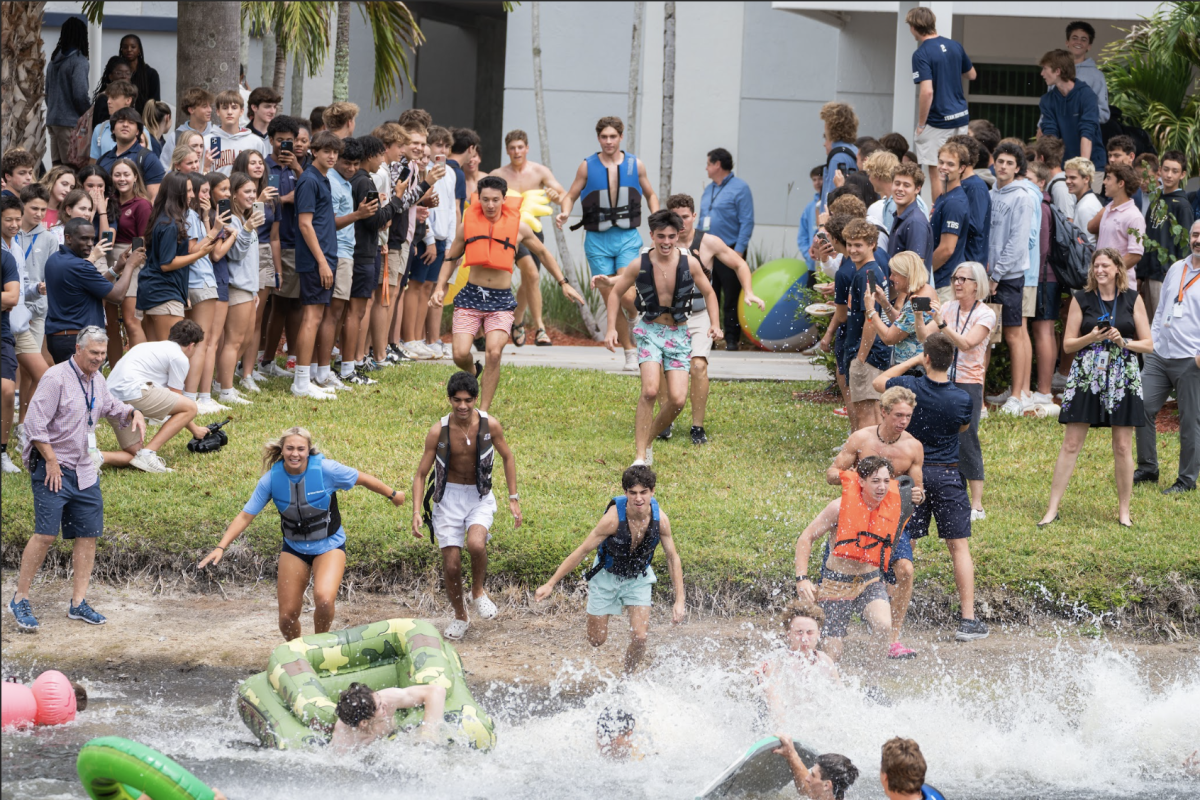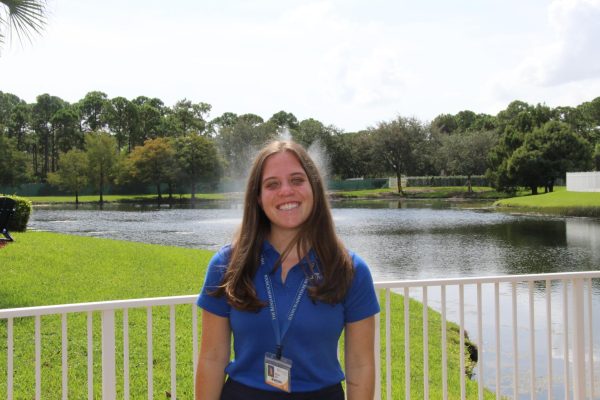The Upper School sat captivated as seven students shared their research experiences at the annual summer science presentations on Friday, October 25, highlighting the projects they pursued over the break from school. Among them, junior Kate Quinlivan and senior Lulu Swank presented their work, ranging from university-level lab research at the University of Virginia to exploring potential treatments for epilepsy.
Quinlivan participated in a selective four week program at The University of Virginia (UVA), designed for rising juniors and seniors with an unweighted GPA of at least 3.5. She was required to submit a transcript, a letter of recommendation, and one to two essays. After being accepted, Quinlivan enrolled in the program, where she earned six undergraduate credits and took two classes daily: a core course specifically for UVA advance students and an elective course that is open to all UVA undergraduates.
Quinlivan’s core course focused on oceanography, while her elective was a lab research class that placed her in the Energy Science and Nanotechnology Lab under Professor Mona Zebarjadi.
Quinlivan’s lab work involved observing and assisting with a scaled-down experiment related to a PhD student’s research on thermoelectric modules—devices that convert heat into electrical energy. As part of this research, Quinlivan’s task was to measure how efficiently different heat sources produced electrical voltage, using tools like a ceramic heater, solar lamp, and even water to test variations in temperature. The overall goal of the experiment was to explore how electronic devices could be cooled while still generating enough electrical power.
Through this work, Quinlivan learned about thermoelectric technology, a field that seeks to address problems like device overheating, which is common in electronics such as cellphones and laptops. The PhD student she worked with was investigating whether bismuth antimony, a material that reacts differently to heat, could be used to cool down electronics more effectively by controlling electrical resistance. By measuring the voltage output under different heat conditions, Quinlivan was able to see firsthand how small adjustments to materials and temperature can make a difference in energy efficiency.
In addition to her research work, Quinlivan gained full access to UVA’s campus amenities, including dining halls, fitness centers, and the opportunity to explore the Corner, a popular downtown area. While Quinlivan experienced a small part of a much greater picture, she loved getting to learn more about lab research and collaborate with educated and motivated individuals.
“The experience made me realize what I liked and disliked about lab research. It really helped me figure out what I was passionate about and gave me such a realistic college experience. I was able to stay in a dorm for four weeks which gave me a good idea of things that I might need in college.
Swank’s summer research experience took place through an internship at Nova Southeastern University (NSU), where she evaluated existing compounds as potential treatments for epilepsy. With the help of Upper School science teacher, Mrs. Renee Szeliga, Swank connected with Dr. Dawson-Scully [Senior Vice President of Research], who later interviewed her and offered her a summer internship position. Originally limited to the summer, Swank’s position was extended through the school year, allowing her to continue the research once or twice weekly.
Swank’s research aimed to test two specific compounds, isoguvacine and semaglutide, on C. Elegans, a model organism used to study epilepsy. Under Scully’s mentorship, her work focused on observing isoguvacine effects on GABA receptors in the brain, which are crucial for controlling seizures. Swank worked alongside a team of undergraduates preparing for medical school and PhD students.
“Hearing all of the different perspectives of the people working in the lab with me is super interesting. There are a couple of pre-med undergraduate students, PhDs in these topics, and Dr. Dawson-Scully himself who has had incredible experiences as a researcher, a professor, and an administrator at a large university,” Swank expressed.
Similar to Quinlivan, Swank found her summer internship to be a transformative experience. “This has allowed me to expand my horizons as a scientist, discovering a more concise future career direction, and gaining incredibly important research experience that will open up more research opportunities for me as I continue to college,” Swank shared.
In addition to Quinlivan and Swank, presentations were also given by, junior Nickie Walsh (University of Notre Dame Summer Science: Neuroscience), senior Chloe McGann (Max Planck Internship: Parkinson’s Disease Biology), senior Chester Coles (The American University of Rome), senior Chase Odom (UF Scripps Summer Internship), senior Liv Caiazzo (Woods Hole Oceanographic Institution in Cape Cod Massachusetts).


